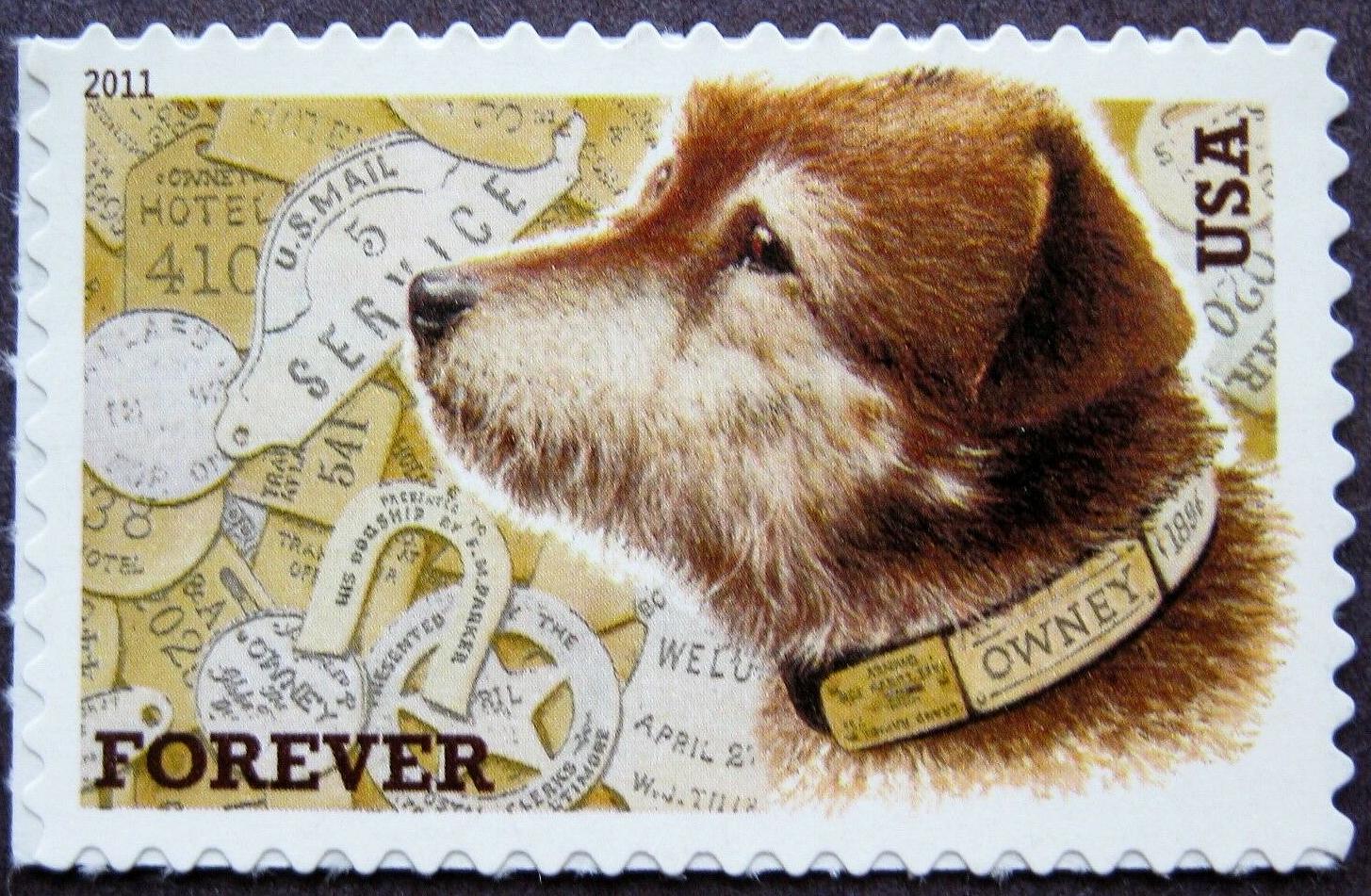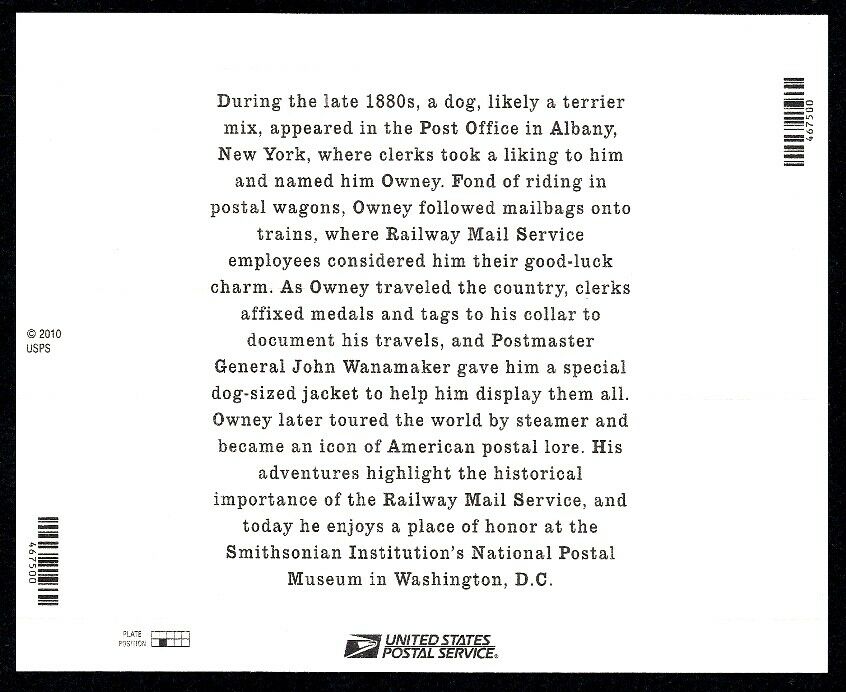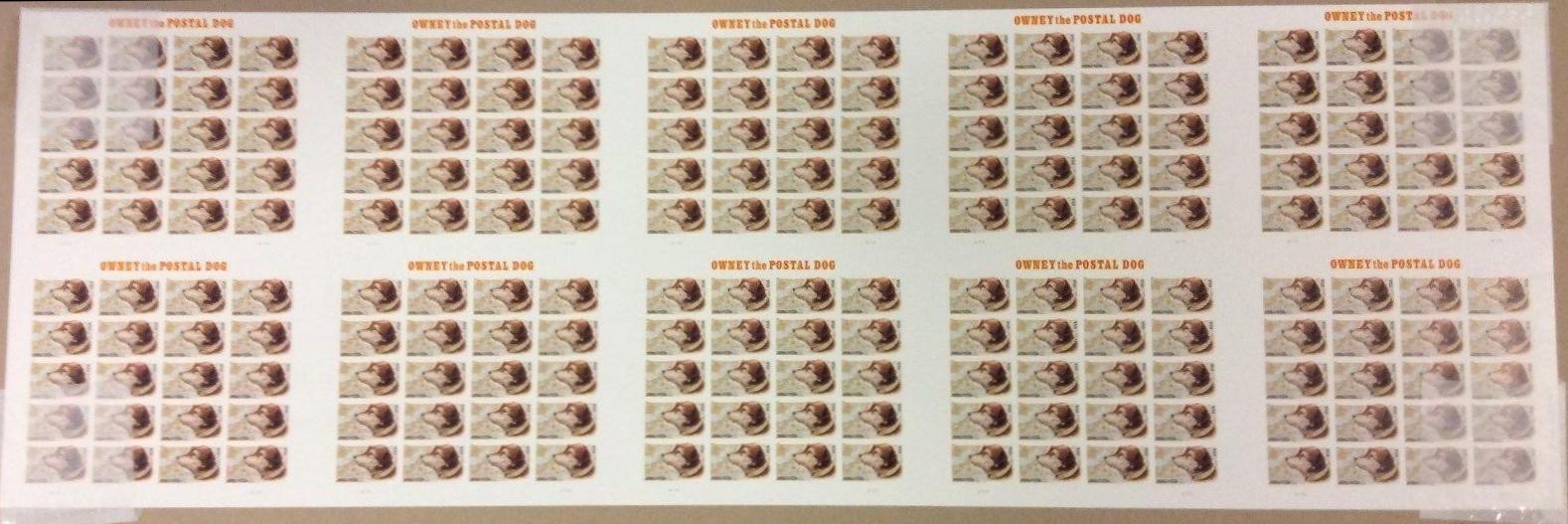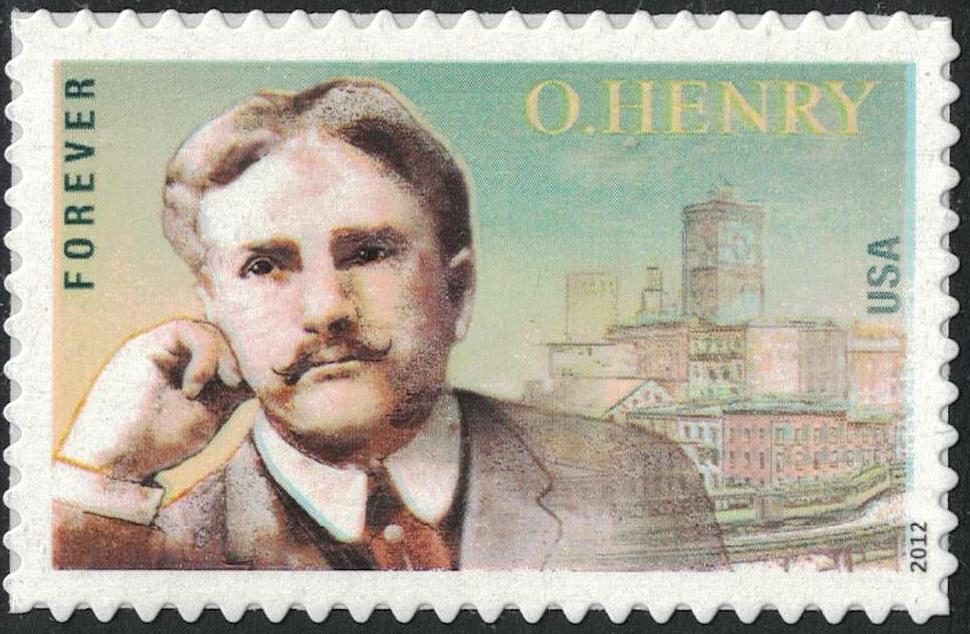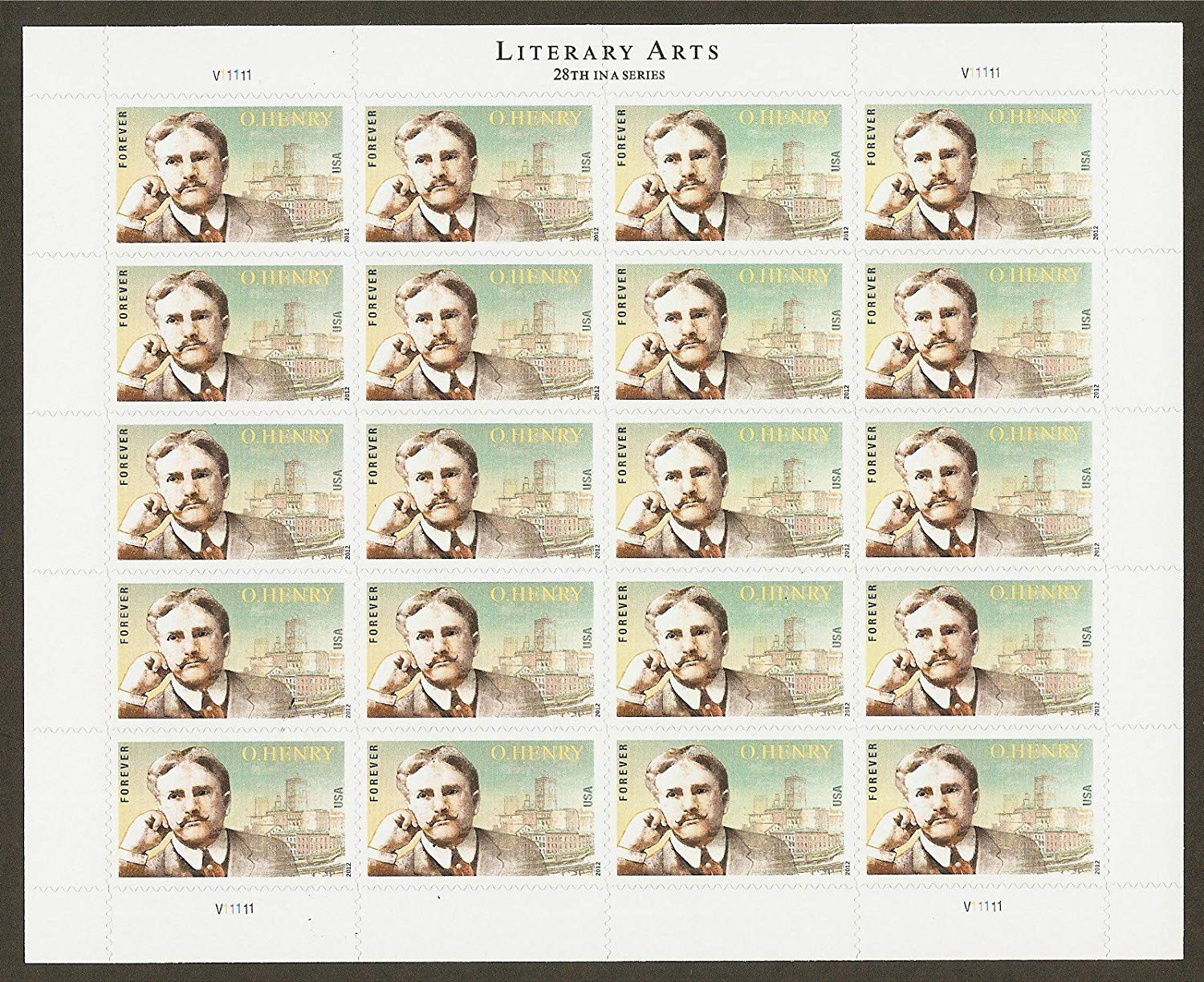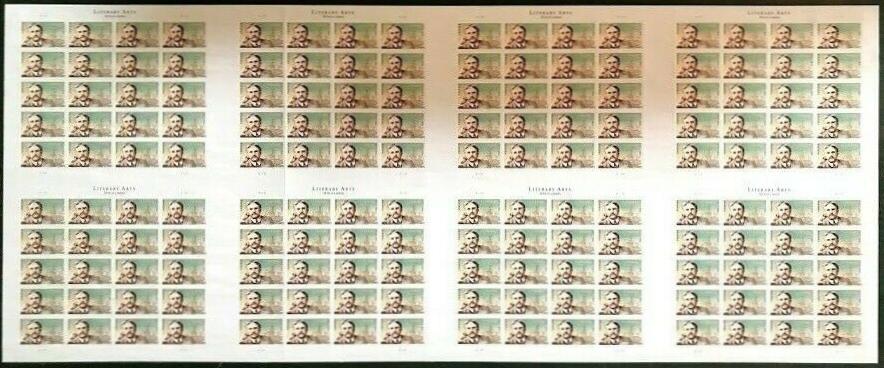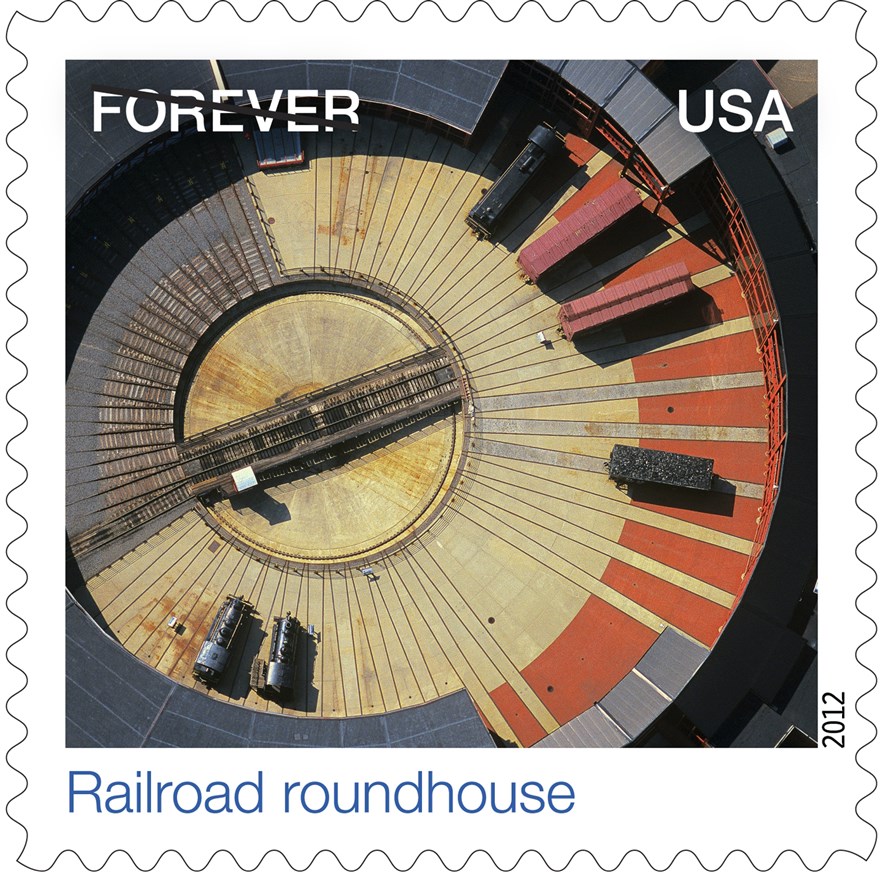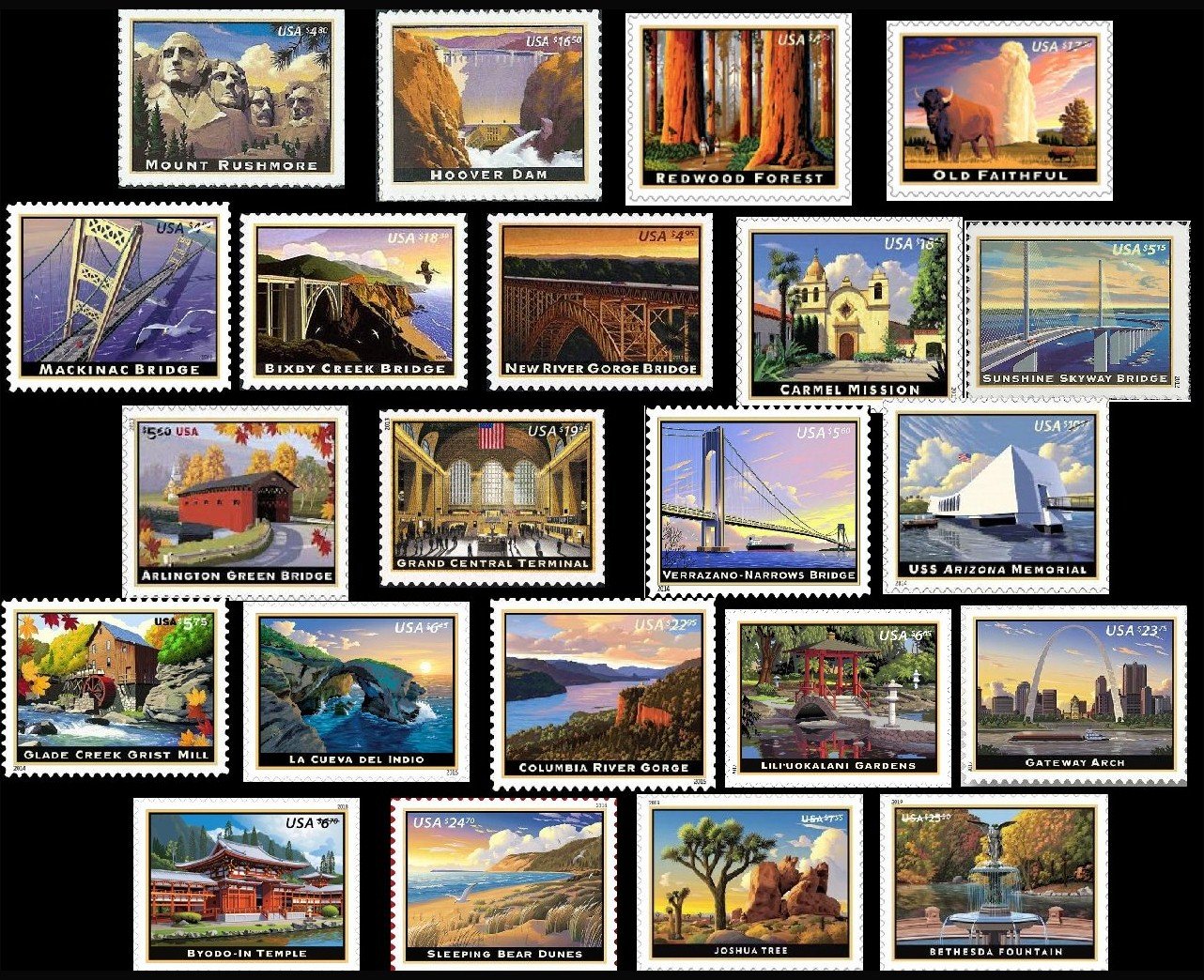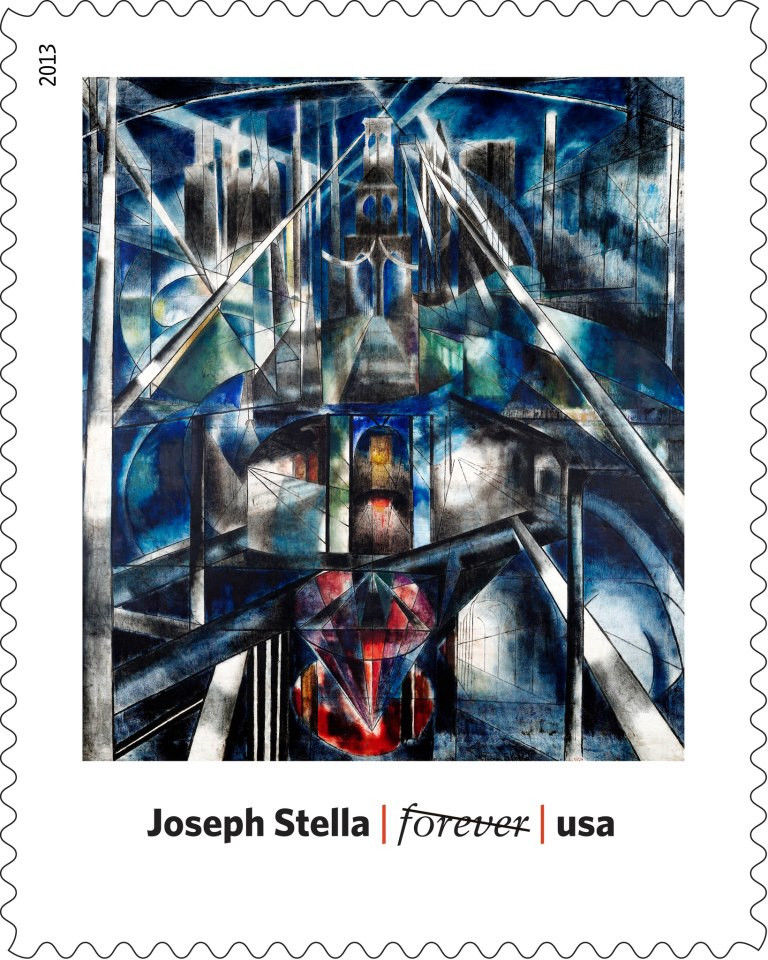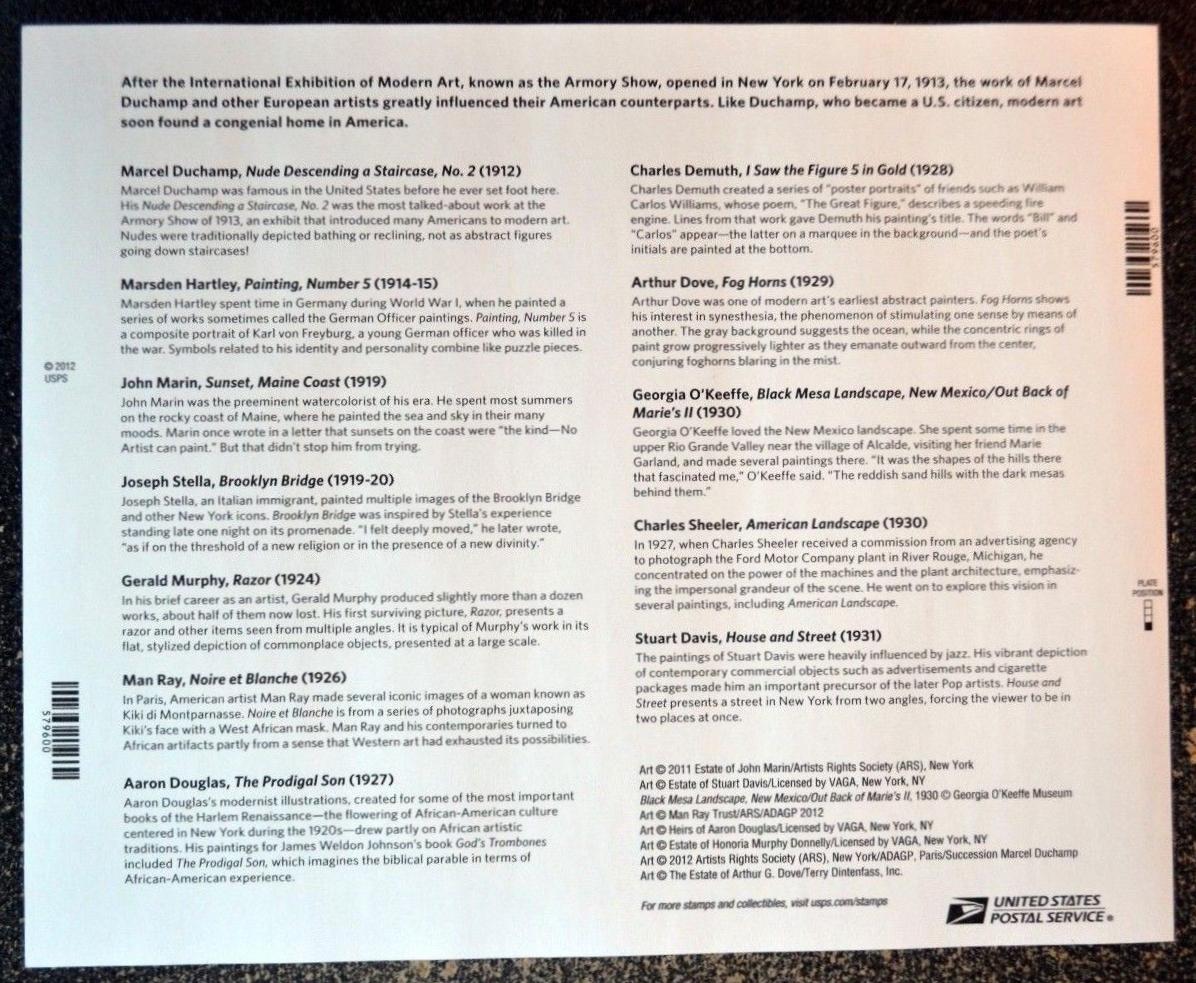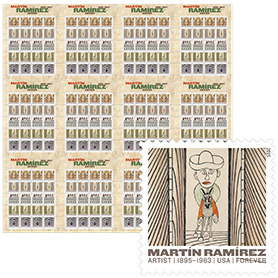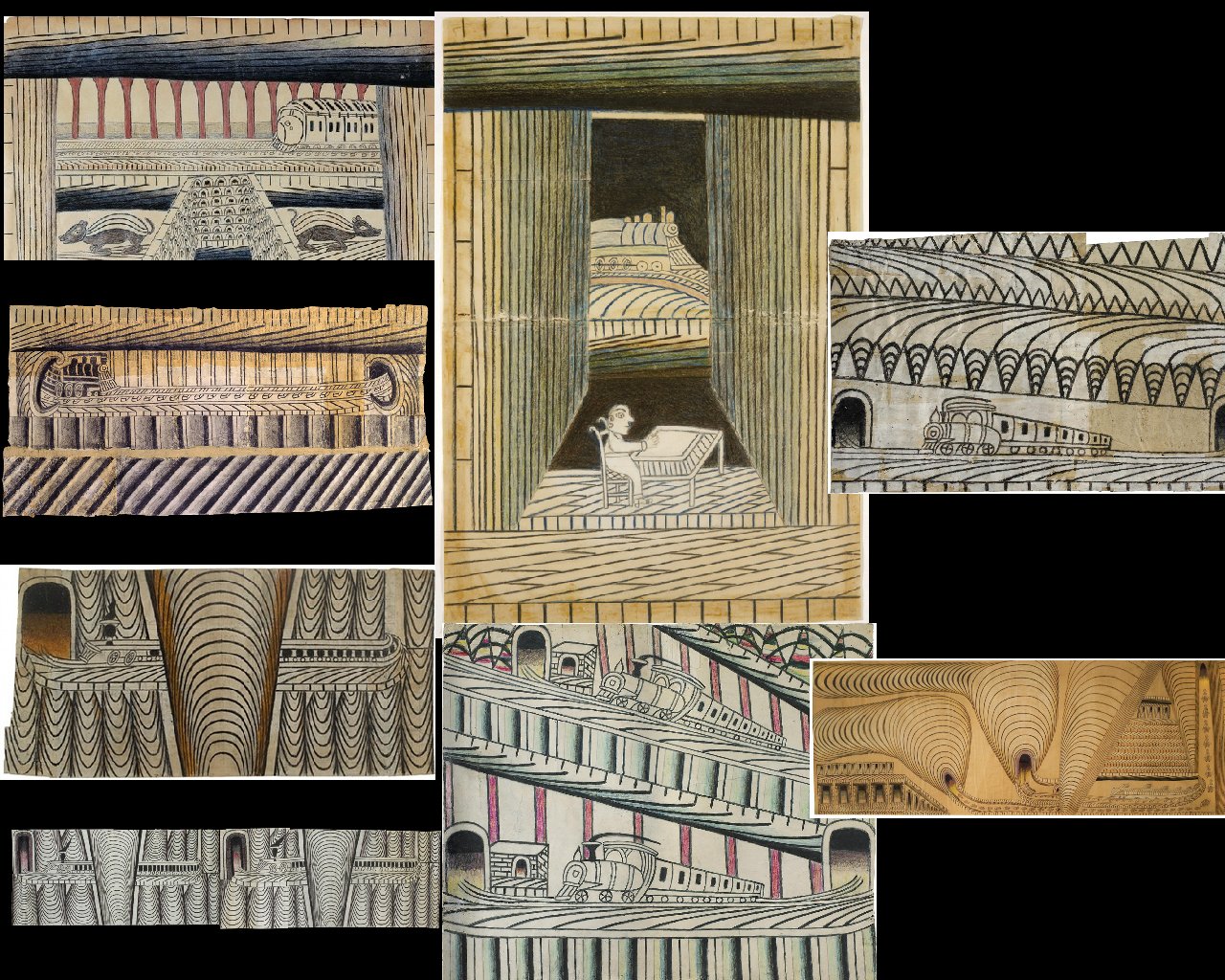
|
<<<< |

|
>>>> |

|
TRAINS ON U. S. STAMPS
and POSTAL STATIONERY
page 12
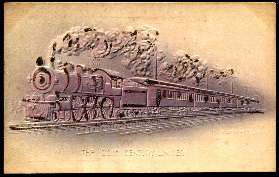
Embossed postcard with train image and glitter - 20th Century Limited |
Flags of Our Nation - Nebraska - April 16, 2010Self-adhesive coil, strip of 10
According to Arago, the web site of the National Postal Museum: In 2008 the Postal Service began a new multi-stamp definitive series called "Flags of Our Nation". Two sets of ten stamps each were issued that year, and a set of ten was issued every year thereafter through 2012. The resulting series of sixty stamp designs depicted the fifty state flags, five territorial flags, the flag of the District of Columbia, and the Stars and Stripes flying over four American landscapes. The format of all the stamps was basically the same - a reproduction of the state's flag on a pole at left, ruffled as if flying in a breeze; at right and below, an image representing the state's industry or culture. For Nebraska, a prairie state, the image shows a crop being watered with a huge sprinkler. As the Scott catalogue points out, the strip of ten self-adhesive stamps in coil format was too large for most albums, so created a display problem for collectors, most of whom broke it into two strips of five.
The flag shows the Nebraska state seal, with a nice clear image of a classic
steam train on a bridge at top center. Nebraska gained statehood as the 37th state in 1867, and the state's first legislature established Nebraska's official seal in the same year. The themes of transportation, industry, settlement, and agriculture are depicted on Nebraska's seal. A railroad train steams across the background, with mountains in the distance. A steamboat plies the waters of the Missouri River. A simple cabin and sheaves of harvested wheat portray the importance of settlers and agriculture. A blacksmith works at his anvil in the foreground. At the top of the seal a banner holds the motto "Equality Before the Law", and around the outside of the seal are the words "Great Seal of the State of Nebraska, March 1st, 1867".The Nebraska state flag was depicted also on Scott 1669. | ||||||
O.Henry - September 11, 2012
In the stamp art, the author's portrait is set against a background image The portrait is based on a photograph of the author as a young man that dates to the late 1880s. Another dull design, if you ask me. | ||||
Earthscapes: Railroad Roundhouse - October 1, 2012
From a USPS publicity brochure for this issue: The Earthscapes Forever stamps allow customers an opportunity to see the world in a new way. This stamp pane presents examples of three categories of earthscapes: nat ural, agricultural, and urban. The photographs were all cre ated high above the planet's surface, either snapped by "eyes in the sky" - satellites orbiting the Earth - or care fully composed by photographers in aircraft. |
American Landmarks Series
|
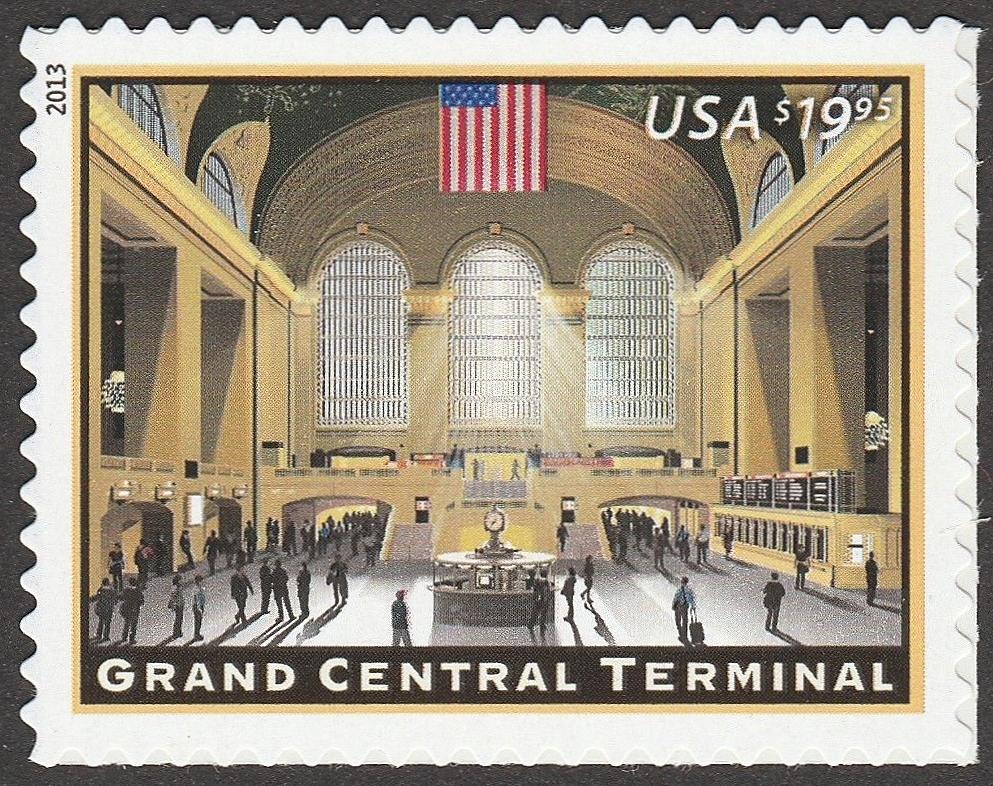
Sc. 4739 - Grand Central Terminal Express Mail - February 1, 2013 |
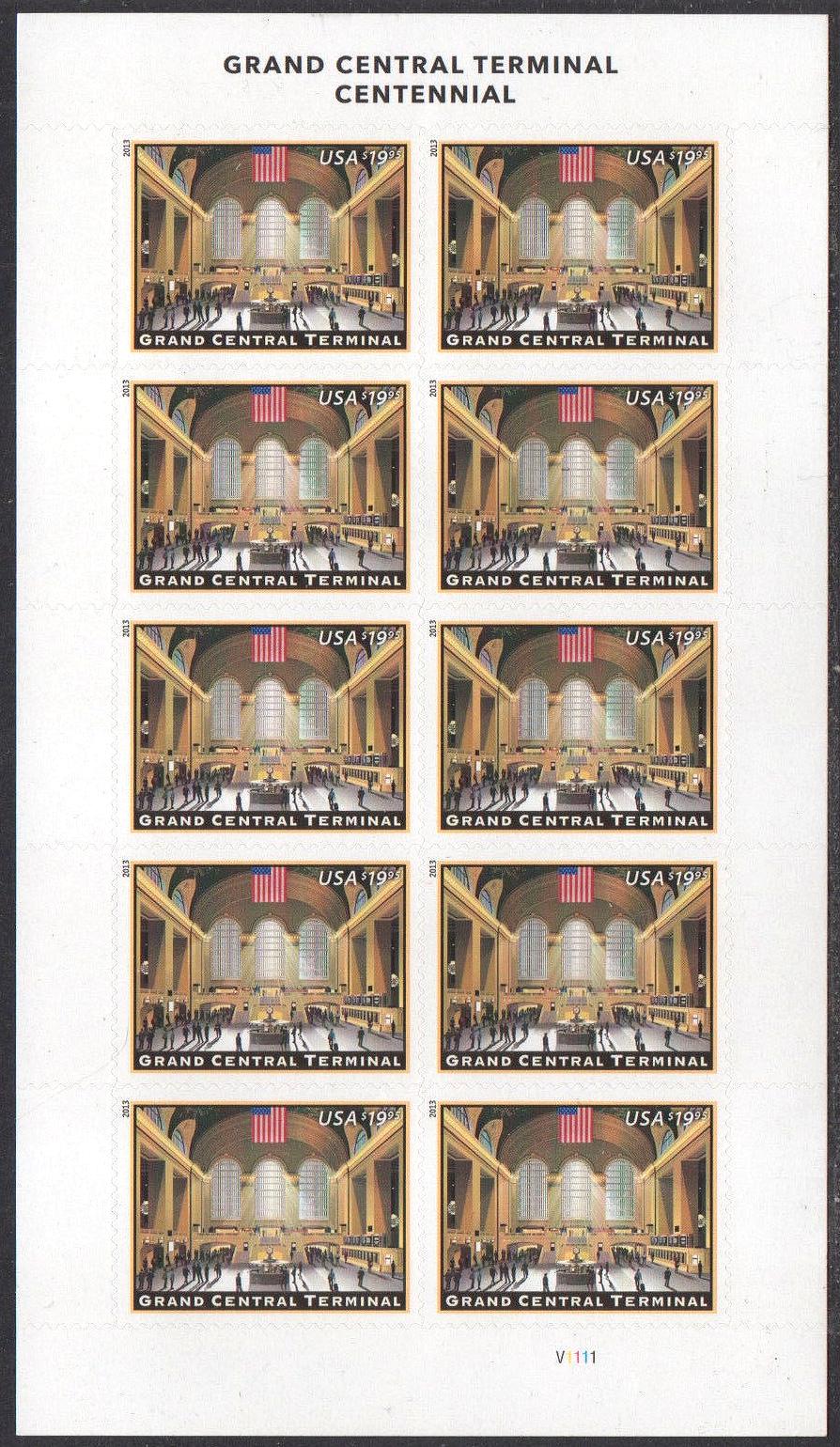
Pane of 10 |
Issued to honor the 100th birthday of the station, this is another issue with no train image, and entirely optional for the rail collector, but Grand Central Terminal in New York is such an icon of rail history that I would want this one in my own collection, even if it does cost a bundle.
FROM the GCT website:
Opened to the public on February 2, 1913, Grand Central is a world-famous
landmark and transportation hub in Midtown Manhattan. Its rich history is a
story of immense wealth and great engineering, but also of survival and rebirth.
Today, the beaux-arts landmark is a retail and dining destination
as well as the home of the MTA Metro-North Railroad
and a subway station serving the 4, 5, 6, 7, and S subway lines.
---------
GCT was almost demolished in the 1970s, but thanks to the efforts of conservationists, it survived and was completely renovated so that today it is a magnificent example of Beaux Arts architecture.
From Wikipedia:
Grand Central Terminal is one of the world's ten most visited tourist attractions, with 21.9 million visitors in 2013, excluding train and subway passengers. It is the third-busiest train station in North America, after Toronto Union Station and New York Penn Station. It is also the largest working train station in the United States, and at the time of its construction, was the largest in the world.
This stamp was the eleventh in a (to date) 11-year (starting in 2008) series of high-value stamps called "American Landmarks." One's cost to own them all, if purchased when new, would total around $265 for the 22 of them issued through March, 2019. That's an average price of TWELVE DOLLARS EACH, with a low of $4.80, and a high of $25.50! They make a nice set, but I'll be content with the images, thank you.
All (to date) of the American Landmarks stamps
sorted by date of issue.
Modern Art in America 1913-1931 - March 07, 2013
|
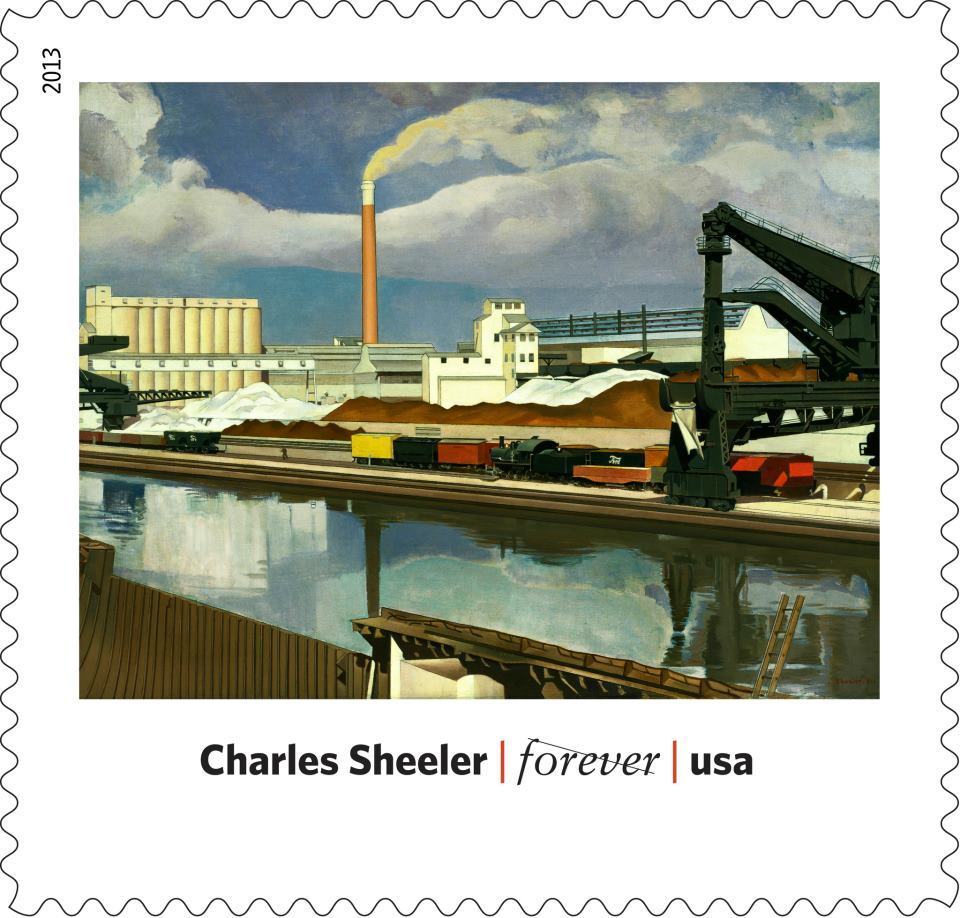
Modern Art in America Charles Sheeler Scott 4748h American Landscape
|
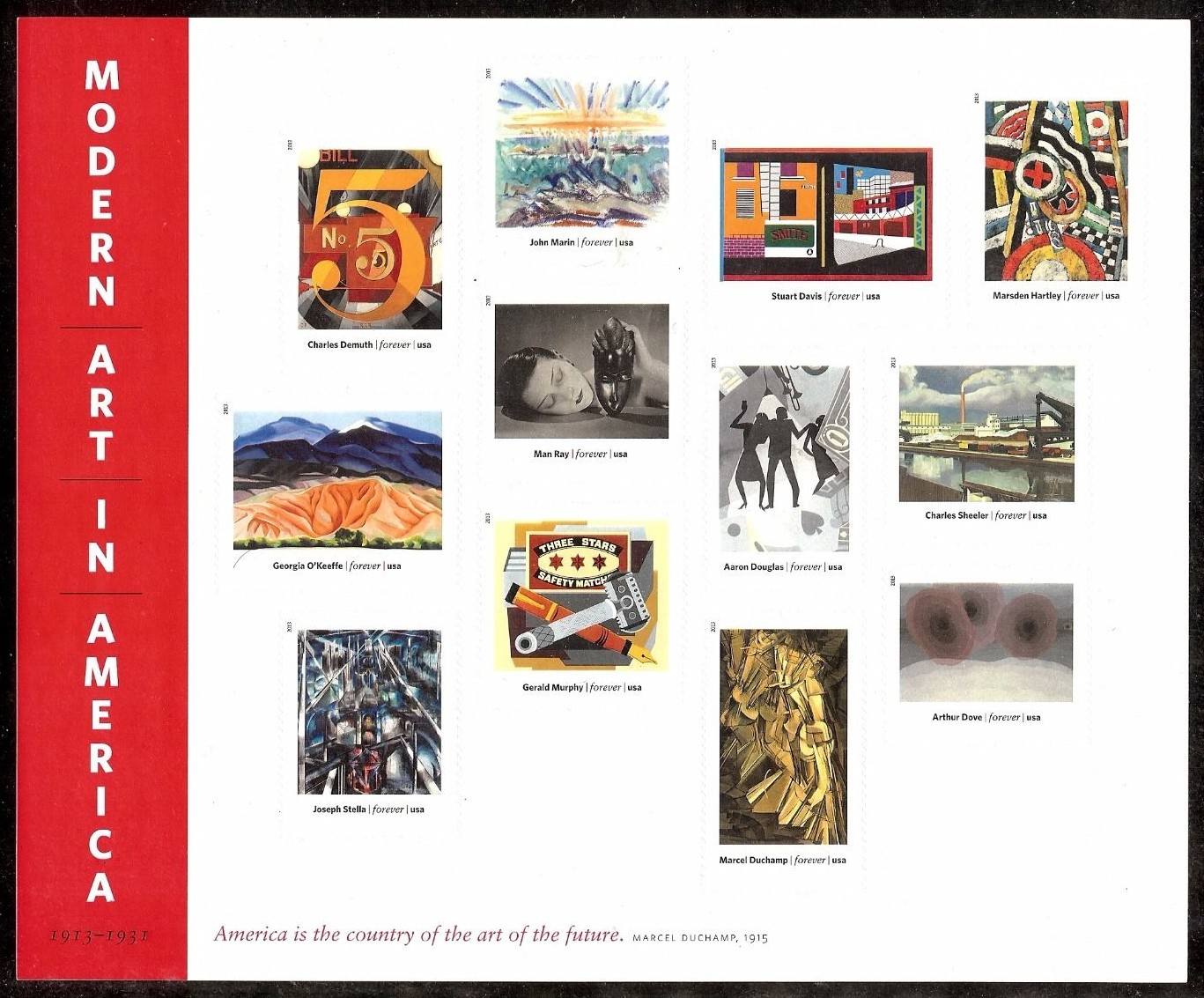
|

Modern Art in America Press sheet |
Though inspired by European artists, American Modern Art is a distinct
style all
its own.
While it encompasses several styles, the subjects are all
American,
either embracing or rejecting the industrial age that was sweeping the nation.
The Modern Art stamps are all unusual sizes and arranged to look like
paintings in
art gallery.
Each stamp pictures the painting and includes the artist's
name.
The back of the pane includes the painting title, date, and information about
artist.
The train theme is clear in the Sheeler painting, but I am including the Stella painting because the Brooklyn Bridge once carried a railroad ;-)From 1898 to 1950, various companies operated local trolley lines over the Brooklyn Bridge, taking passengers from many points in Brooklyn and Queens, New York City, United States to the Park Row terminal in Lower Manhattan. These lines entered the bridge roadway from Fulton Street or Sands Street in Downtown Brooklyn, some of them using elevated trackage at the Sands Street elevated railway station.So when this painting was created, the railroad was in operation, and *might* just be lurking somewhere in that abstraction.
Made in America: Building a Nation
|
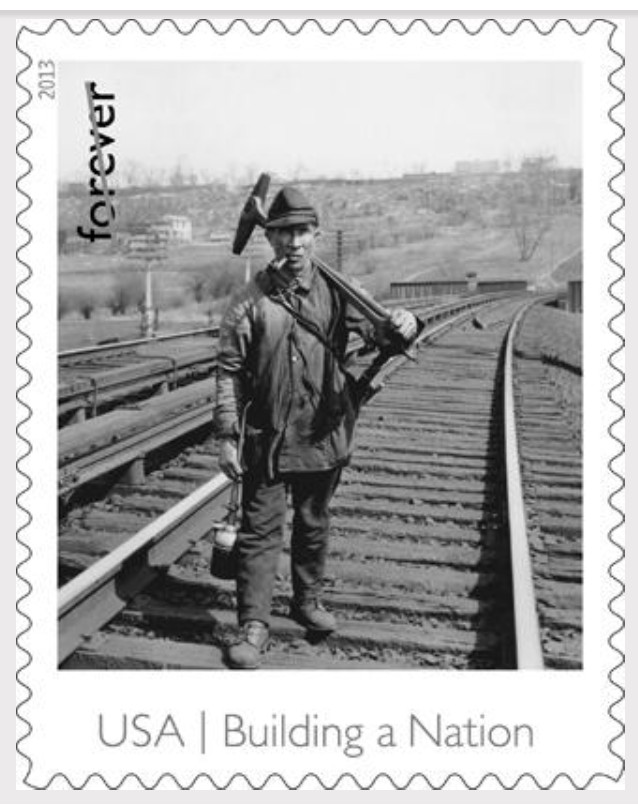
Made in America: Building a Nation |
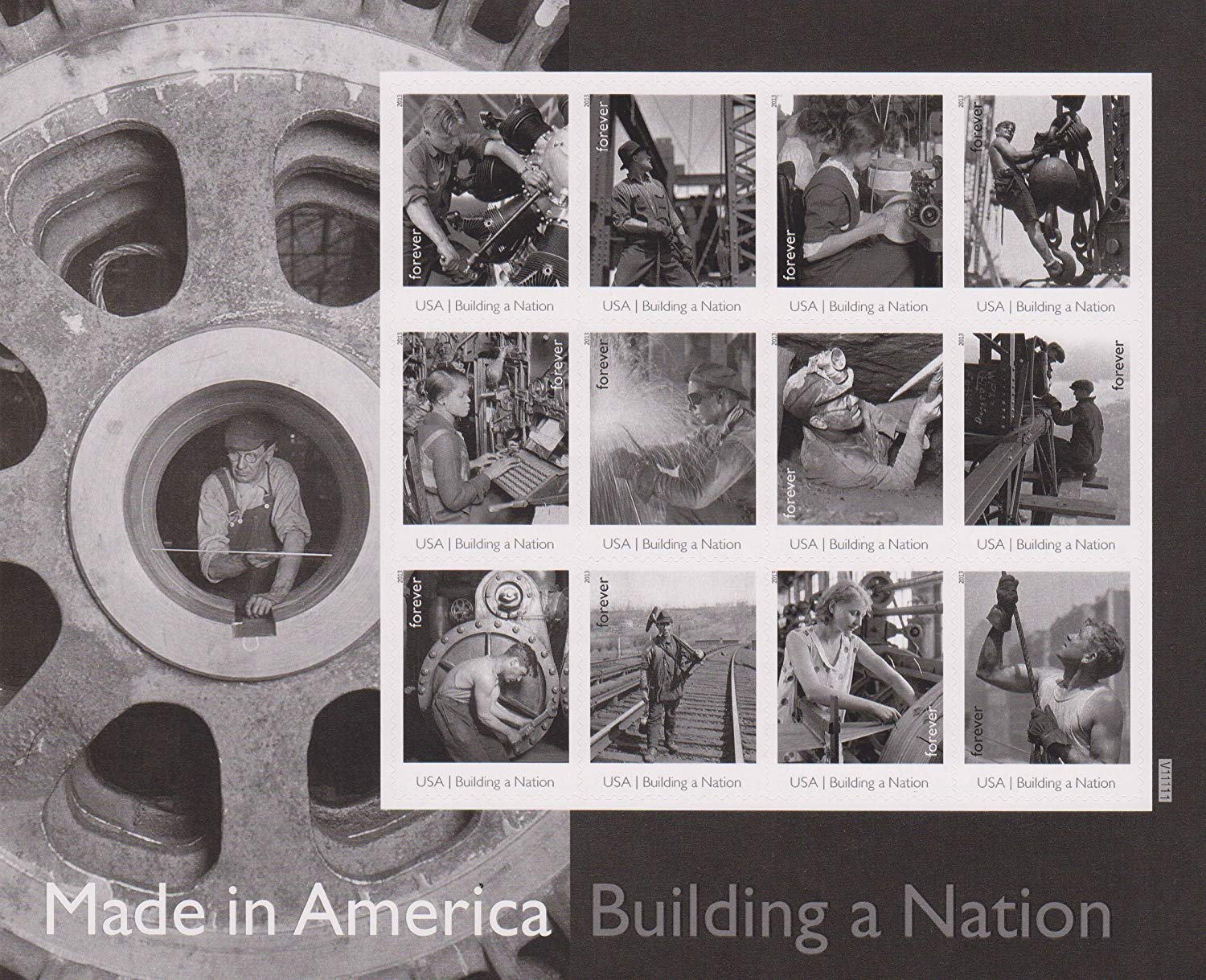




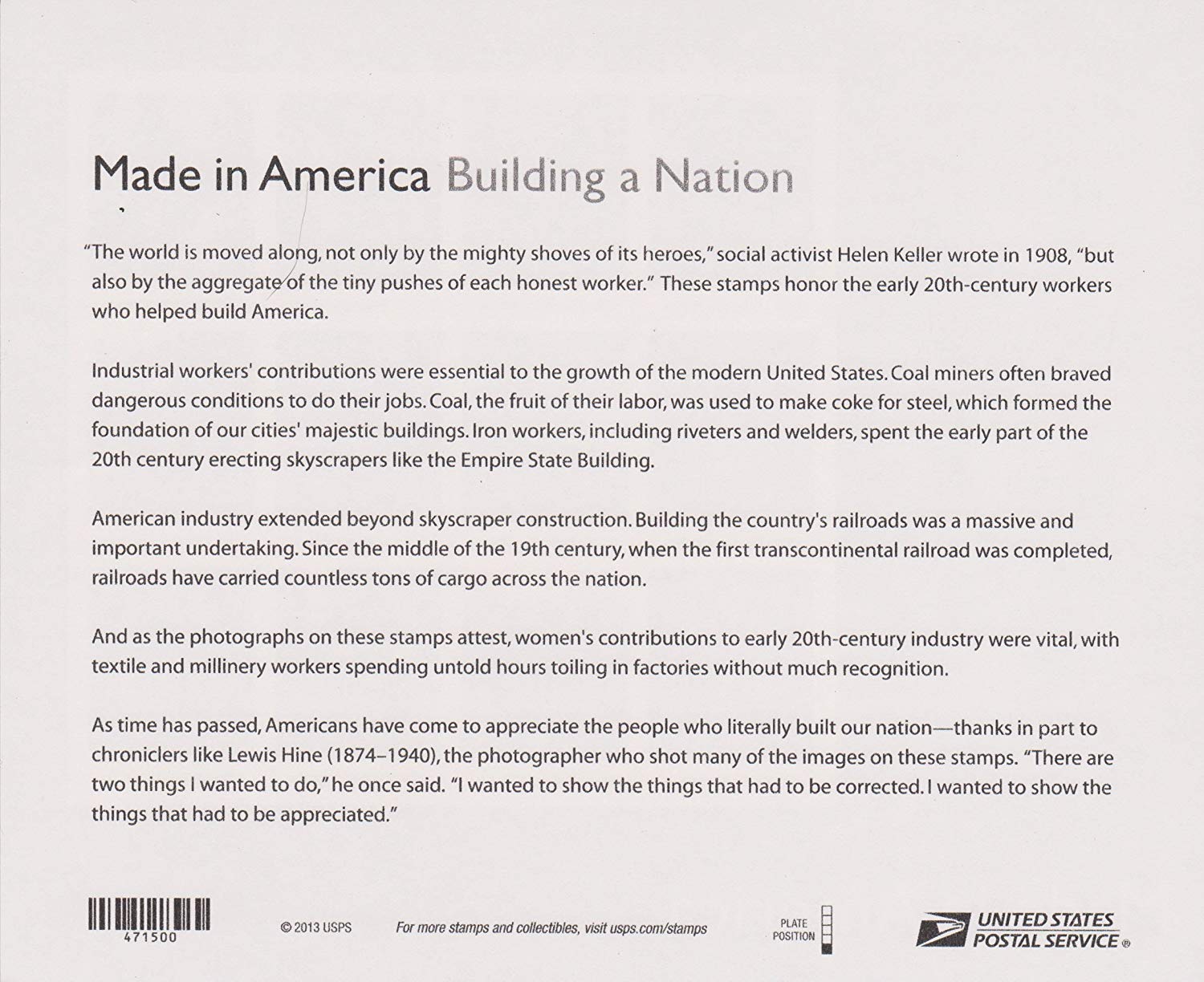
Scott 4801 - 5 (!) Panes of 12 |

Made in America: Building a Nation |
I love this pane of stamps,
the images are so iconic and compelling in black and white,
and evoke perfectly the spirit of the early 20th Century.
I don't think they have ever issued multiple panes like this, with different background images,
and from a collector's point of view I do resent that, and the added expense of owning them all,
but it does make for an attractive and striking press sheet, though again, How the bleep do you
display and/or store the thing?!
The text below is taken from various RR maintenance manuals of the 1880s to 1920s.
308. Each foreman (or his track walker) must pass over the section or sections under his charge every day, taking with him a track-wrench, two red flags and four torpedoes, and carefully examine the track to see if it is safe for the passage of trains; and if any place is found unsafe he must at once fix red signals on both sides of such place, at a distance of ninety (90) rails (or fifteen telegraph poles). The flag-sticks must be firmly driven into the ground, and a torpedo fixed on the rail on the engineman's side.
Two million and a half miles are covered each year by the track walkers of the Southern Pacific Company. Each day every one of the 7000 miles is gone over piecemeal. Roadbed, tracks, switches, bridges, culverts, signals, everything is carefully scrutinized so that trains may move along quickly and with safety. On straight tracks, where there is no danger of being struck by trains, the track walker rides on a velocipede.
Where there are many curves or train service is especially frequent, he walks on foot. The inspector is fully provided with red flags, lanterns, torpedoes, spike mauls, tacks, wrenches and extra bolts, so that he can take care of whatever emergency situation that may arise. The automatic block system by the position of its blades will show any interruption in the continuity of the rails, and the work ot the track walker is an added safety precaution.
Martín Ramírez - March 26, 2015
I will let the back of the pane (above) and Wikipedia tell you the painter's sad story, and you must judge for yourself whether he was "a great artist." He certainly liked trains. Composite of Ramírez paintings and drawings with trains. |
American Landmarks Series
|
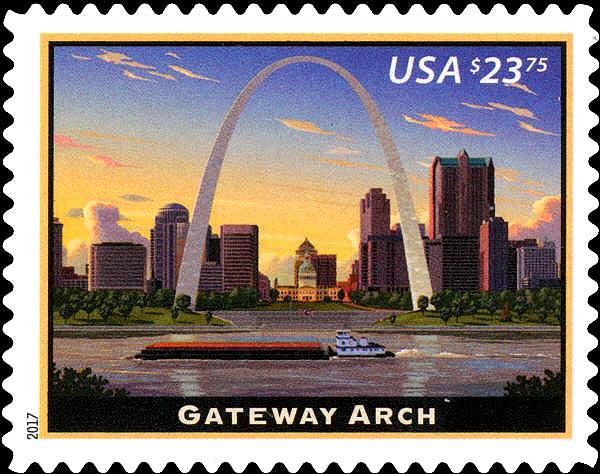
GATEWAY ARCH January 22, 2017 Scott 5157 |
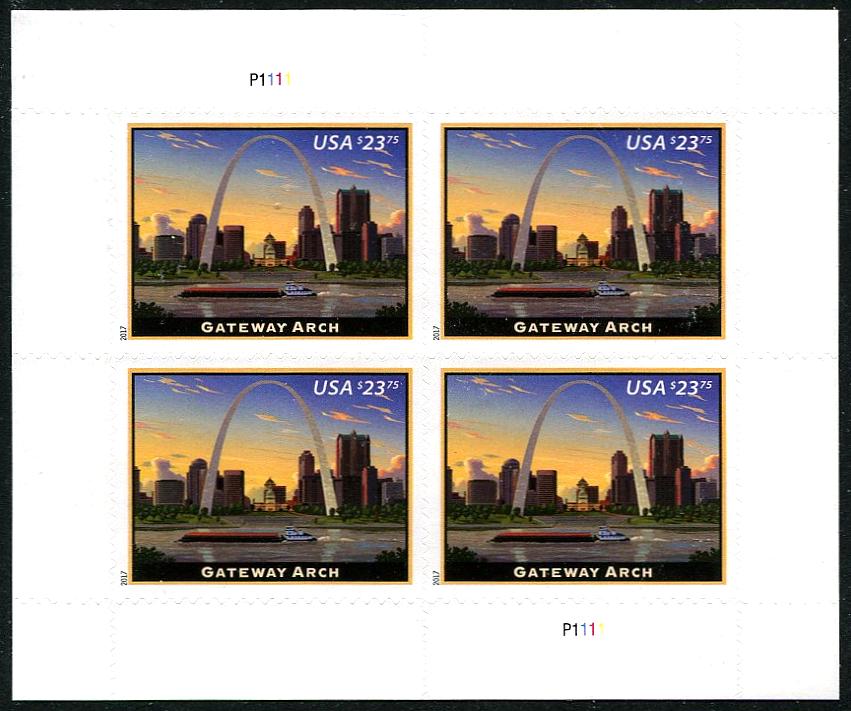
Scott 5157 - Pane of 4 |
Who needs a stamp that costs twenty-four (OK, twenty-three seventy-five)
dollars?
Apparently the USPS thinks we do.
Too bad, it's a beautiful
image, but I can't afford that much just to fill a space in my album,
especially for a stamp it's almost impossible to use.
Who sends a
package Priority Mail Express ?
And as for the pane of four, oy vey!
BUT WAIT! WHERE'S THE TRAIN CONNECTION?
Glad you asked.
Whitney McMahon, editor of The Dispatcher, journal
of the CJRRU (Casey Jone Rail Road Unit of the ATA), tells me that
"Florence Wright and I decided that the arch in St. Louis had a railroad
connection as the cars that you can ride to the top run on rails.
We asked, and no one reading The Dispatcher objected."
I'll let you go to the GATEWAY ARCH web site for a detailed explanations of how the "train" (that's what it's called) works.
US TRAINS
|
Send feedback to the webmaster: CLICK HERE
Creation -- 02/02/2019
Revised -- 05/23/2019





